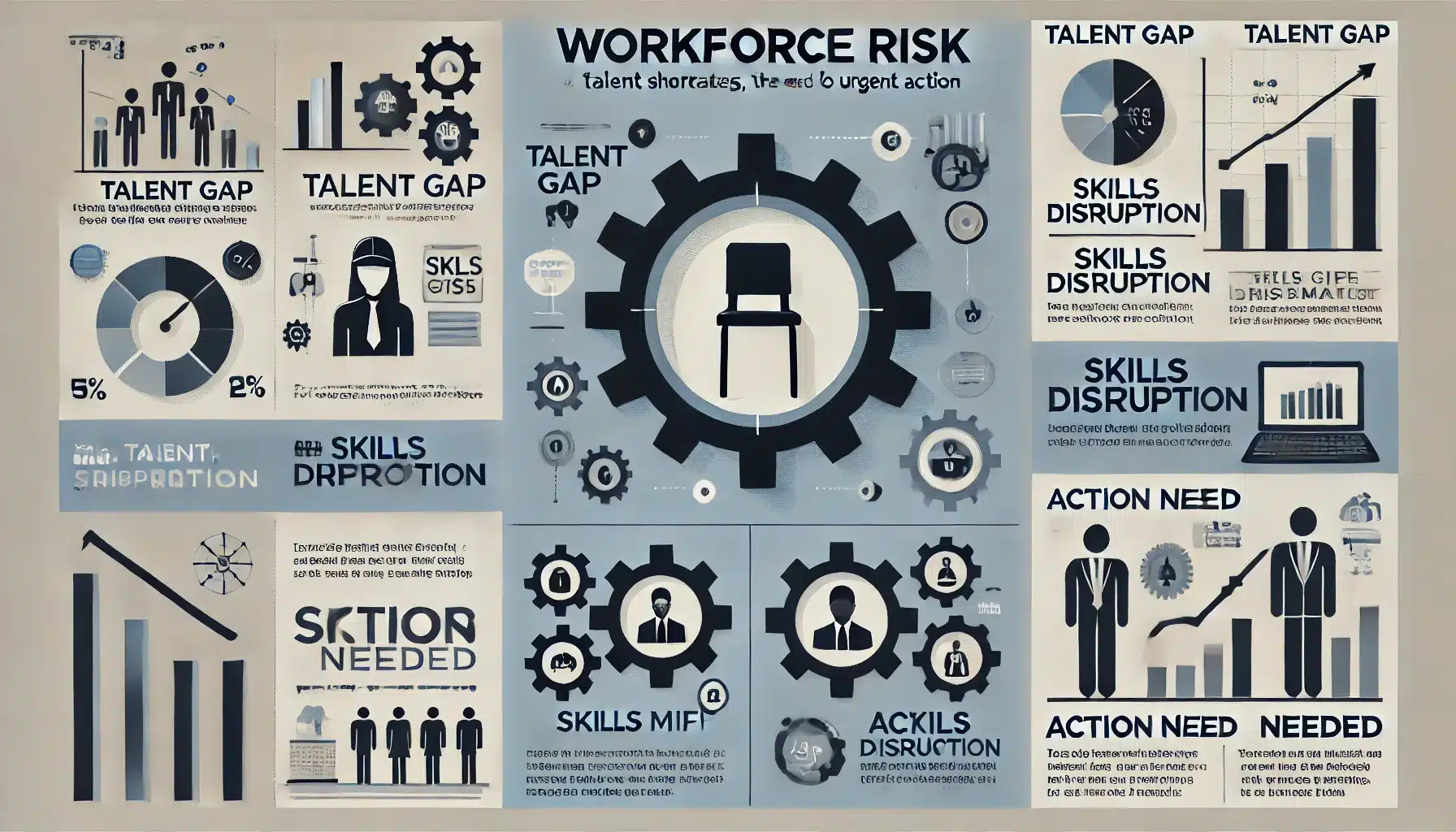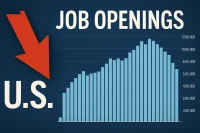Fortune 1000 bosses see talent shortages as the biggest risk to business in 2025, new research from Lightcast shows.
The survey gathered data from 1,000 companies and shows how external labor market pressures are threatening workforce sustainability and future growth.
Rising Talent Shortages: A Major Business Threat
Labor shortages and skills disruption are already having a significant impact on businesses across industries.
The report reveals several critical points:
- 72% of CEOs consider talent gaps and shortages their top business challenge.
- 85 million jobs could go unfilled by 2030, leading to a loss of $8.5 trillion in unrealized revenue.
- 33% of companies report having suffered a loss due to talent shortages in the past year.
These findings highlight the urgency for companies to rethink their talent strategies and act swiftly.
The Growing Demand for Unified Action
While CHROs (Chief Human Resources Officers) have traditionally driven workforce planning, the scale of the talent crisis now requires action from all C-suite leaders.
CEOs, CFOs, and COOs must work alongside CHROs to craft a response to this mounting challenge.
He warns that many industries are facing the reality of a rapidly shrinking talent pool, driven by factors such as:
- AI advancements
- Shifts in demographics
- Changing immigration policies
Without strategic action, businesses risk being unable to fill essential roles and stay competitive.

The Workforce Risk Score: A Critical Tool for Companies
The Workforce Risk Outlook uses a “Workforce Risk Score” to help organizations understand how external pressures are affecting their workforce. Based on over 2.5 billion data points and more than 33,000 skills across 15 industries, the analysis provides a comprehensive view of the talent challenges facing companies.
Cole Napper, VP of Research & Innovation at Lightcast, said:
“The Workforce Risk Score doesn’t mean these companies are doing something ‘wrong’—instead, it assesses the external labor market pressures they face and how these will affect their workforce sustainability, competitiveness and future growth.
“Frankly, these are challenges CHROs and HR teams have been losing sleep over for years, and we have the impact data to validate their concerns and explain why now is the critical time to act.”
Key Insights
- No company is immune to talent shortages, with all organizations receiving some level of risk.
- The highest risk score was not a 5.0, suggesting that companies still have time to act and mitigate these risks.
- By 2030, Lightcast projects a 4.39 million worker shortage in the US alone, with certain industries like healthcare, construction, and retail seeing the most significant impact.
- The workforce is no longer just about competition within industries—companies now face competition across sectors, particularly in the race for AI-skilled talent.
Hiring? Post jobs for free with WhatJobs
What’s at Stake?
The failure to adapt to this changing labor landscape could lead to devastating consequences.
According to Lightcast, industries will not only face a shortage of workers but will also see a severe mismatch of skills—with companies fighting over the same, often scarce, talent.
In industries like manufacturing and retail, companies that fail to adjust risk losing their competitive edge to others that better align their workforce with emerging trends and needs.
Preparing for the Future: A Call for Action
So, how can companies tackle this problem?
- Data-driven workforce planning is essential. The Lightcast dashboard allows businesses to analyze their risk score, understand the specific labor challenges they face, and take proactive measures.
- Collaboration across C-suite leaders is crucial. It’s no longer enough for HR to handle talent strategy; CEOs and other executives must ensure workforce planning is integrated into the overall business strategy.
- Investing in upskilling can help bridge the talent gap, especially as disruptive skills like AI and data analytics reshape the labor market.
Need Career Advice? Get employment skills advice at all levels of your career
Looking Ahead: Preparing for the New Workforce Reality
The Lightcast Workforce Risk Outlook serves as a wake-up call for businesses worldwide. The talent challenges ahead will require swift, unified action across leadership teams.
While the data is clear—skills shortages are on the rise—companies still have time to build a more sustainable workforce strategy. If they act now, they can reduce the risks and position themselves for future growth.
The real question is: Are your company’s leaders ready to act before the talent crisis becomes a reality?




